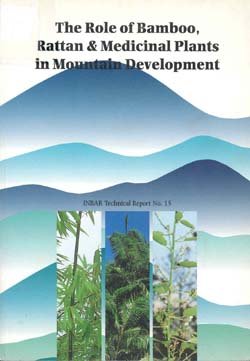
Bamboo-based economic activities are an intrinsic part of both the rural and urban socio-economic life of Nepal. The rural economy is highly dependent on bamboo resources. Entire culms are used as rafters, pillars, and fence posts; they are split into sections, crushed into panels or split for further use; or are woven and then used. The importance of bamboos in the predominantly agricultural economy of Nepal is well-recognized. Bamboo and bamboo products are in great demand by farmers, artisans and rural as well as urban enterprises. Bamboo-based local enterprises, especially in the mountain areas, are an important source of employment to both the rural and urban workforce. It is estimated that more than 100,000 mandays of workforce is currently employed in this sector. Out of the estimated 12% contribution to the national GDP by the forestry sector, the contribution of bamboo is 1-2% (Karki 1995), although no proper accounting has been carried out. However, the low contribution is mainly due to lack of processing at the production sites and/or rural areas where factor costs are relatively low and most of the products are consumed to meet subsistence needs.